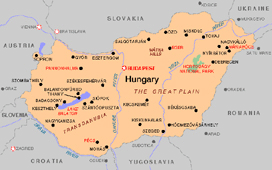| |

There is something irrepressibly individual about Hungary. Partly it is a question of nationality - Magyars among a host of Germanic and Slav races - and partly it is a native flair that added style and dash to the Austro-Hungarian empire and which not even the greyness of Communism was able to suppress entirely.
Hungarians have their own ways of doing things. Their language is one of the most difficult in Europe, and in their vineyards they have a host of grape varieties found hardly anywhere else; they also make a sweet wine, Tokaji, unlike any other. All the individuality and flair they can muster will be needed if Hungary is to fulfil its potential in the 1990s.
Hungary made wine in Roman times and - with interruptions caused by the Turkish occupation -has maintained a strong wine tradition ever since. The Tokaji wines were traded across Europe in the 17th century, and under the AustroHungarian empire they achieved widespread fame. The advent of Communism in the 1940s brought collectivization, land reform and sporadic modernization. Many of these changes are now being reversed, with land being returned to its pre -revolutionary owners.
In some ways the end of Communism left the Hungarian wine industry in a worse state than others in eastern Europe. In Hungary centralization was less rigid than in, for example, Bulgaria, and although roughly half the annual production of 44-61 million cases was exported, 80% was sent to the very countries whose markets collapsed just when Hungary needed them most: the USSR, East Germany and Poland. The instant result was a massive glut of wine - enough to supply the domestic market twice over - and less money coming in from exports.
This could have meant great distress, if Hungary had not been able to supply Western markets with clean, fresh, good-value Sauvignon Blanc and Chardonnay. These wines are made in Hungary with Western (often Australian) know-how to appeal to the hard-currer white-wine-thirsty markets world. If that is the future of tan wine, it is bright indeed.
|
|
|
|


